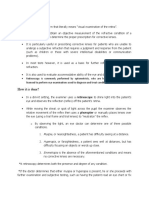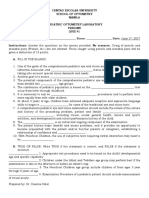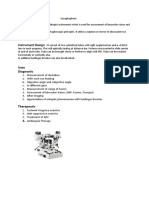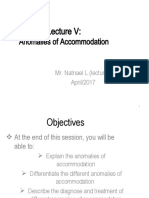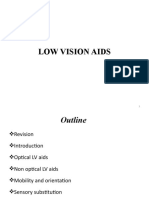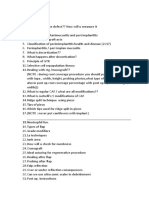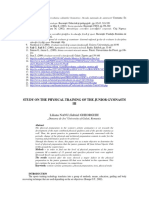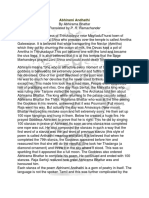0% found this document useful (0 votes)
80 views23 pagesVisual Acuity
The document discusses visual acuity, including how it is measured using Snellen charts with letters of decreasing size read from standard distances, with the ratio of viewing distance to smallest legible letter size expressed as a Snellen fraction; it also covers different types of visual acuity charts, procedures for measuring distance and near visual acuity, and notations used to record visual acuity results.
Uploaded by
Khompi NkhosiCopyright
© © All Rights Reserved
We take content rights seriously. If you suspect this is your content, claim it here.
Available Formats
Download as PDF, TXT or read online on Scribd
0% found this document useful (0 votes)
80 views23 pagesVisual Acuity
The document discusses visual acuity, including how it is measured using Snellen charts with letters of decreasing size read from standard distances, with the ratio of viewing distance to smallest legible letter size expressed as a Snellen fraction; it also covers different types of visual acuity charts, procedures for measuring distance and near visual acuity, and notations used to record visual acuity results.
Uploaded by
Khompi NkhosiCopyright
© © All Rights Reserved
We take content rights seriously. If you suspect this is your content, claim it here.
Available Formats
Download as PDF, TXT or read online on Scribd
/ 23








